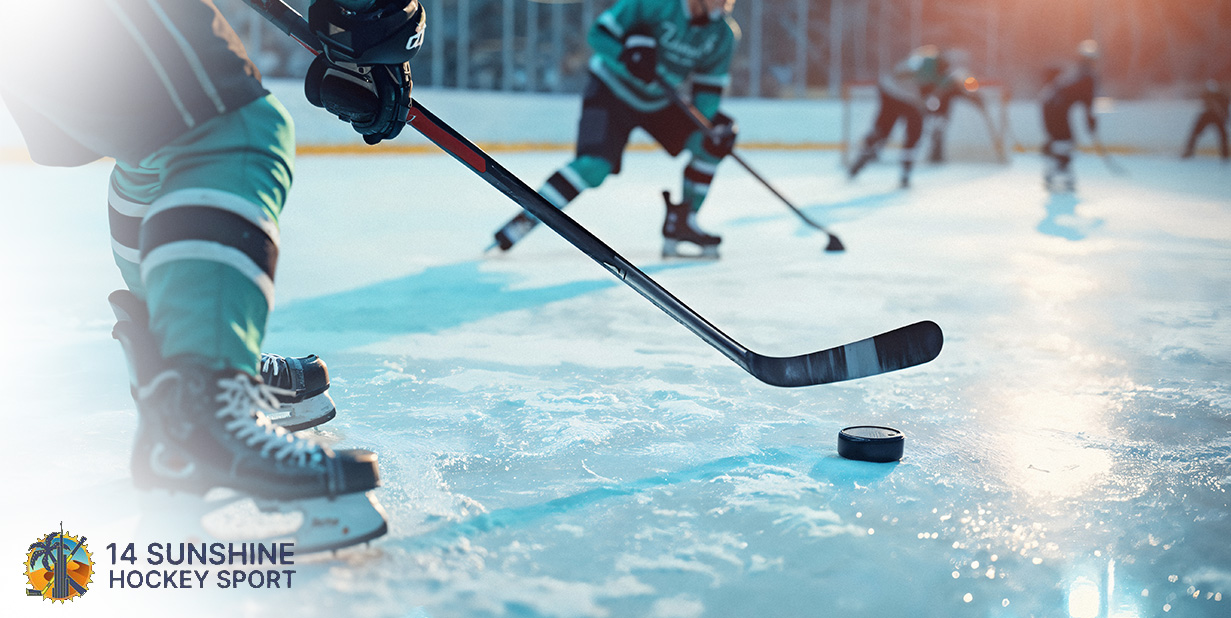The Evolution of Ice Hockey Gear: How Technology Is Changing the Game

Ice hockey is one of the fastest and most physical sports in the world. Over the years, the game has become quicker, tougher, and more competitive. To keep up with the changes, hockey gear has also gone through big improvements. Thanks to technology, players today are faster, safer, and better equipped than ever before.
In this blog, we’ll explore how ice hockey gear has evolved over time and how modern technology is changing the way the game is played.
A Look Back: Early Hockey Equipment
When ice hockey first became popular in the late 1800s and early 1900s, players wore very little protective gear. Most of them played in simple sweaters, wool pants, and leather skates. Helmets were not used, and goalies didn’t wear masks.
Here are some key features of early hockey gear:
- Sticks were made from one solid piece of wood. They were heavy and stiff
- Skates had blades that were simply screwed onto leather boots
- Pads were minimal, often just a bit of felt or leather for shin and elbow protection
- Helmets and masks were almost unheard of until the 1970s
This lack of protection made the sport more dangerous. Injuries were common, especially head injuries and facial cuts.
Key Milestones in Gear Development
As the sport grew and became more physical, gear started to improve. Here are some important changes that happened over the years:
- 1930s to 1950s: Goalies began to wear basic leather pads, and some started using thin plastic face shields
- 1960s: Goalie Jacques Plante was the first to regularly wear a mask during games. His decision helped normalise facial protection
- 1970s: Helmets became more common, though many players still refused to wear them
- 1980s: Hockey gloves, shoulder pads, and shin guards were redesigned with better padding and plastic inserts
- 1990s: Full-face shields and cages were introduced at youth and amateur levels. NHL players also began using lighter sticks made of composite materials
These changes slowly made the game safer while also improving performance.
Modern Gear and New Technologies
Today, ice hockey gear is a mix of advanced materials, smart design, and safety-focused features. Technology now plays a big role in how equipment is made.
1. Skates
Modern hockey skates are much lighter than older models. They are made from carbon fibre, thermoformable materials, and memory foam.
- Custom fit: Some skates can be baked in an oven to mold perfectly to a player’s foot
- Blade systems: Many new models allow players to quickly change blades between periods
- Better support: New boots offer strong ankle protection while improving speed and balance
2. Sticks
Hockey sticks have changed more than almost any other piece of equipment.
- Materials: Sticks are now made with carbon fibre and fiberglass, making them very light and strong
- Flexibility: Players can choose different levels of stick flex depending on their strength and playing style
- Blade curve: Stick blades are shaped in specific ways to improve shooting and puck control
These changes allow players to shoot harder and handle the puck with more accuracy.
3. Helmets and Face Protection
Head injuries, especially concussions, are a major concern in hockey. That’s why modern helmets are designed with safety first.
- Multiple layers: Helmets now include layers of foam, plastic, and shock-absorbing materials
- Custom fit: Many helmets have adjustable sizing systems for a snug fit
- Visors and cages: Most leagues now require full-face protection, especially for young players
4. Protective Pads
Some companies are even testing helmets with built-in sensors to detect impacts and warn of possible concussions.
- Shoulder pads, elbow pads, and shin guards are made with light but strong materials like high-density foam and plastic
- Breathable design: New gear allows more airflow, keeping players cooler during games
- Slim fit: Pads are now shaped to allow better movement and flexibility
5. Goalie Equipment
Modern pads are designed to protect without slowing the player down.
Goalies wear the most gear on the ice, and their equipment has also changed a lot.
- Lighter pads help with faster movements and quicker reactions
- Chest and arm protection offers better coverage without being too bulky
- Goalie masks are now made from fibreglass and kevlar for maximum safety
Some goalie gear also includes special grips or textures to control rebounds and help direct the puck away from the net.
How Technology Is Helping Players Improve
Besides making gear safer and lighter, technology is also helping players train better and track their performance.
- Smart gear: Some skates and sticks now include sensors that track skating speed, shot power, and puck handling
- Video analysis: Players use video and data tools to study their movements and make changes
- Fitness tracking: Wearable tech helps players monitor their heart rate, recovery, and effort levels
These tools give players of all levels the chance to improve their skills in smarter ways.
The Future of Hockey Gear
As technology continues to grow, we can expect even more changes in the coming years. Some ideas already in development include:
- Smart helmets that send real-time impact data to coaches or medical staff
- Lighter materials that still offer full protection
- Custom 3D-printed gear made exactly for each player’s body
The focus will always be on keeping players safe while helping them move faster and play better.
Conclusion
Ice hockey gear has come a long way from the days of wooden sticks and wool jerseys. Today’s equipment is lighter, stronger, and smarter, helping players of all levels enjoy the game with more confidence and safety.
Whether you’re just starting out or have been playing for years, it’s worth learning about the gear you use. Technology is changing the way we play, train, and protect ourselves — and that’s good news for everyone who loves the game.
